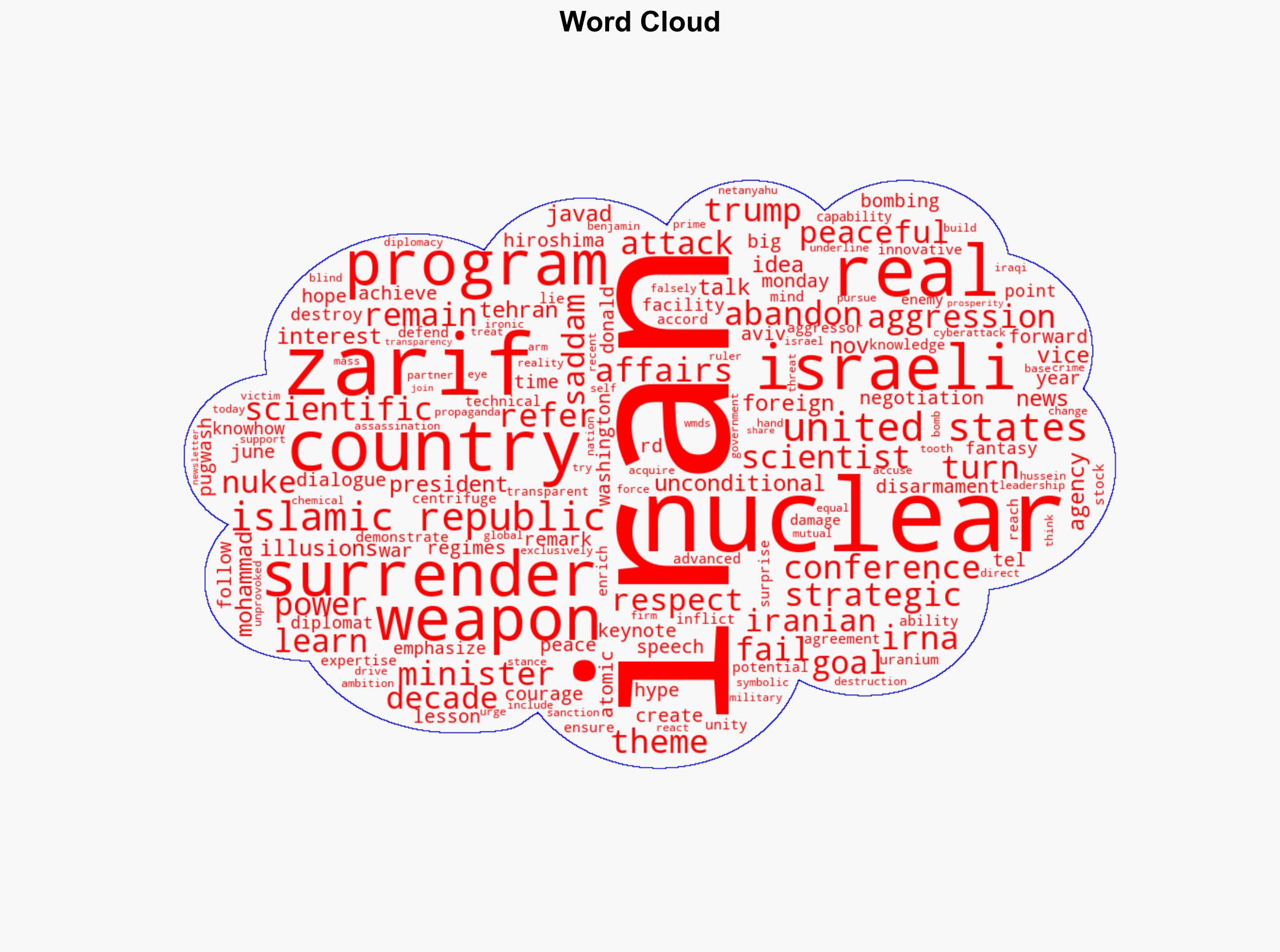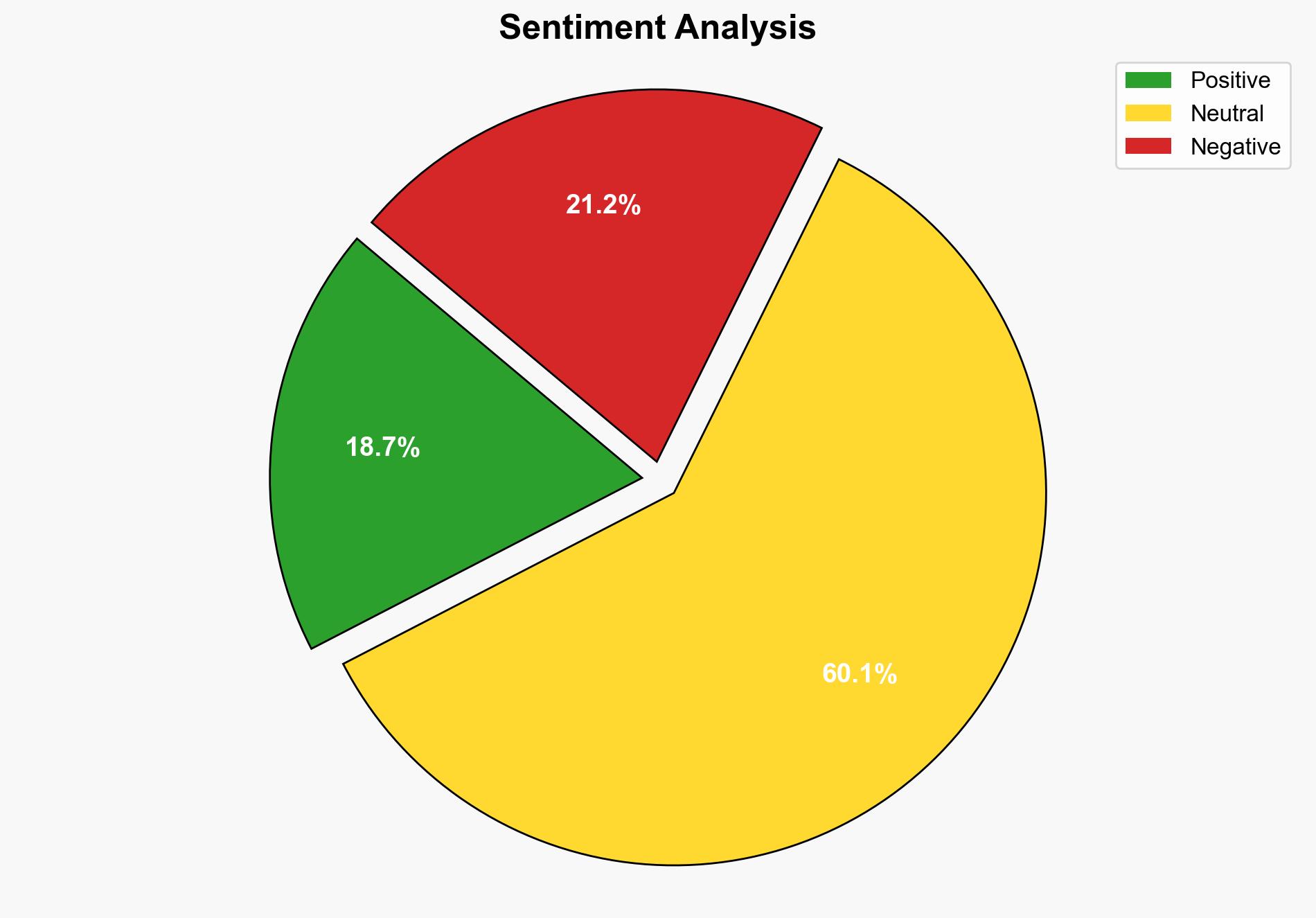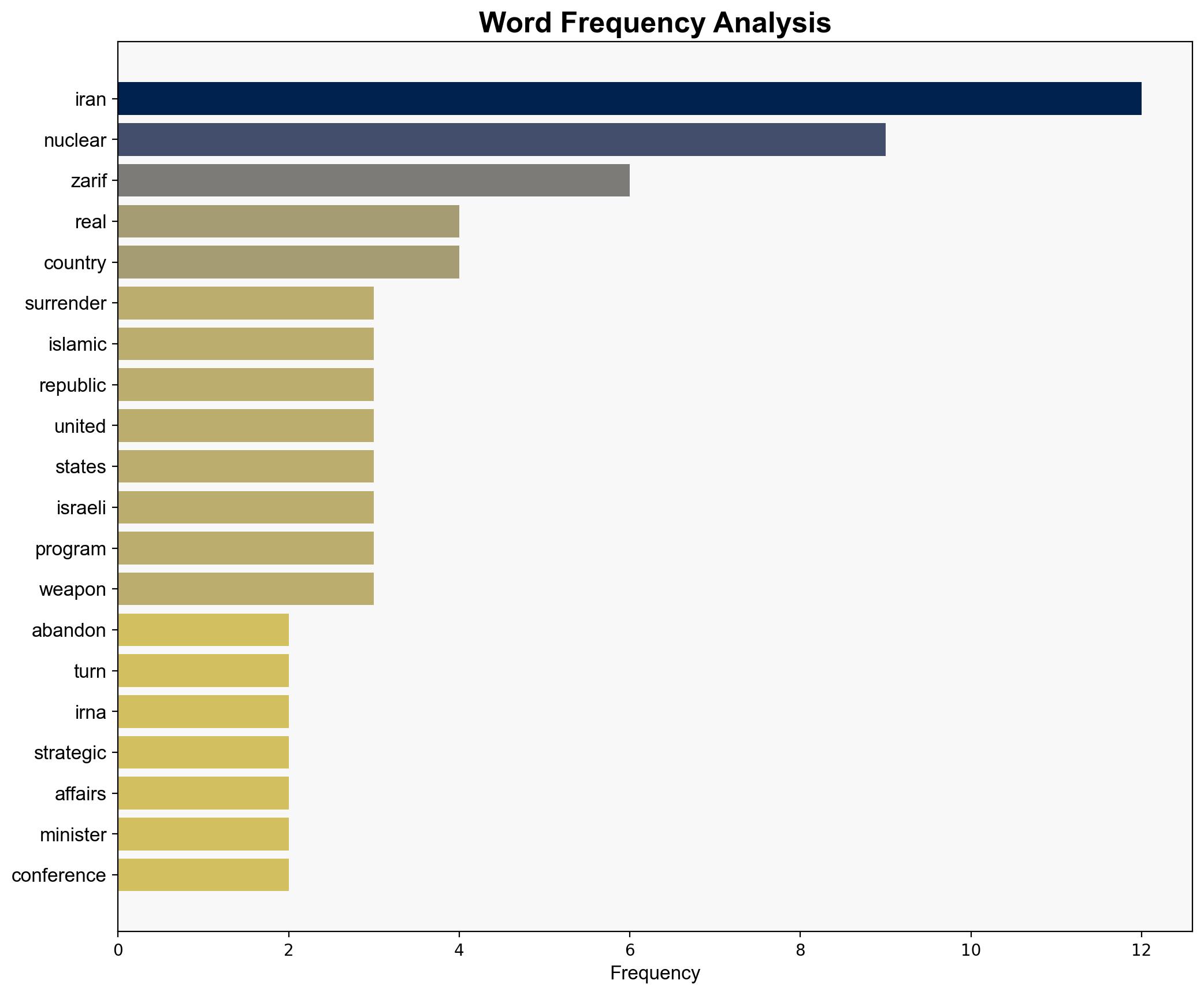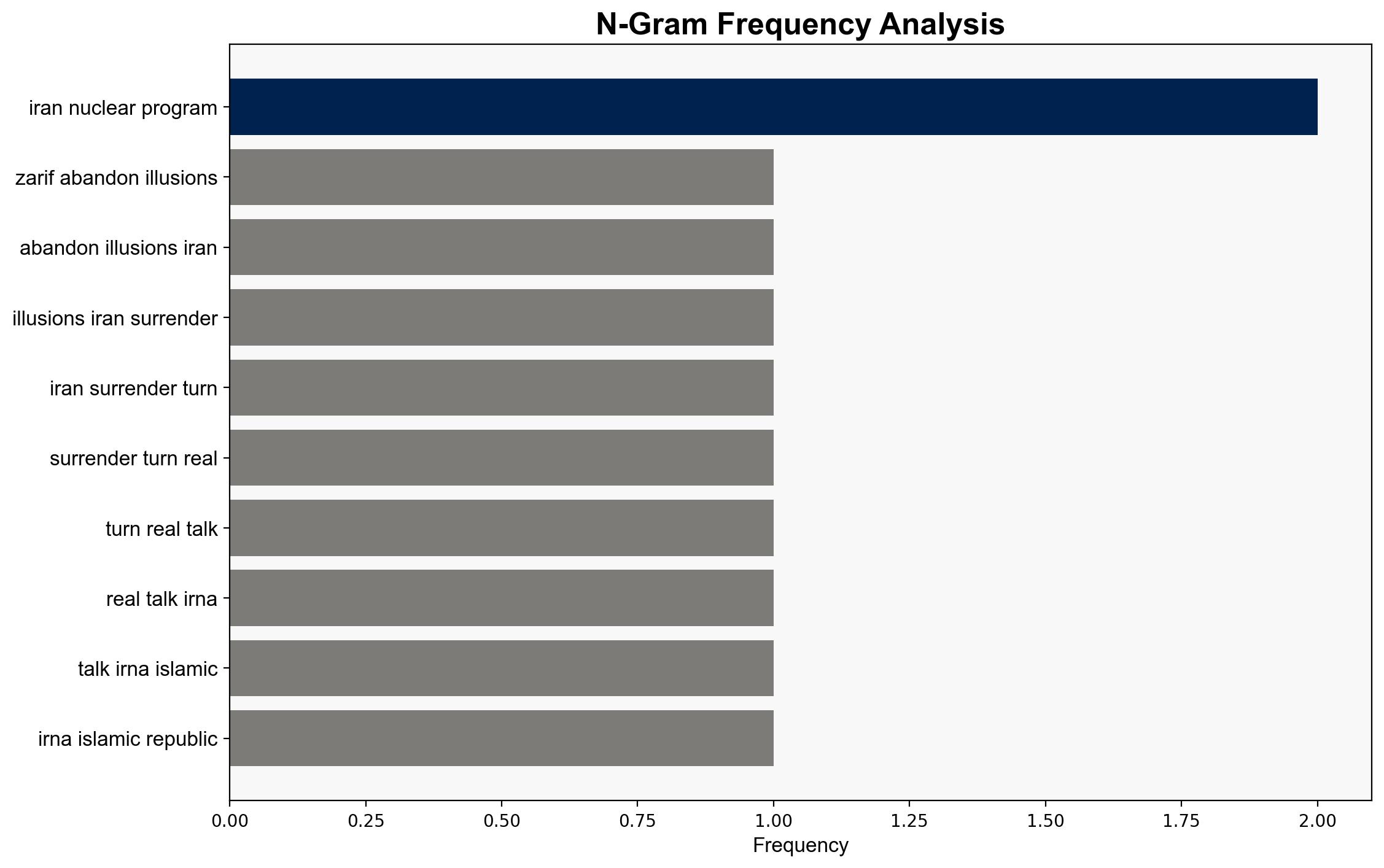Zarif US must abandon illusions of Iran’s surrender and turn to ‘real’ talks – Globalsecurity.org
Published on: 2025-11-04
Intelligence Report: Zarif US must abandon illusions of Iran’s surrender and turn to ‘real’ talks – Globalsecurity.org
1. BLUF (Bottom Line Up Front)
The most supported hypothesis is that Iran is positioning itself for strategic negotiations with the United States, emphasizing its nuclear capabilities as a deterrent rather than an offensive threat. Confidence level: Moderate. Recommended action: Engage in diplomatic talks with Iran, focusing on transparency and mutual respect to de-escalate tensions and prevent potential nuclear proliferation.
2. Competing Hypotheses
1. **Hypothesis A**: Iran seeks to leverage its nuclear capabilities to gain strategic advantages in negotiations with the United States, emphasizing peaceful intentions while maintaining a strong defensive posture.
2. **Hypothesis B**: Iran’s rhetoric is primarily aimed at domestic and regional audiences to consolidate internal support and deter external aggression, with no genuine interest in altering its nuclear stance or engaging in substantive negotiations.
Using ACH 2.0, Hypothesis A is better supported by Zarif’s emphasis on transparency and peaceful intentions, as well as historical context regarding Iran’s victimization by WMDs. Hypothesis B is less supported due to the lack of direct evidence suggesting Iran’s unwillingness to negotiate.
3. Key Assumptions and Red Flags
– **Assumptions**: Iran’s nuclear program is solely for peaceful purposes; the United States is willing to engage in genuine negotiations.
– **Red Flags**: Potential cognitive bias in interpreting Iran’s intentions as purely defensive; lack of direct evidence of Iran’s willingness to compromise on nuclear issues.
– **Blind Spots**: The influence of regional actors such as Israel and Saudi Arabia on Iran’s strategic calculations is not fully explored.
4. Implications and Strategic Risks
– **Geopolitical**: Failure to engage in meaningful negotiations could lead to increased regional tensions and potential military confrontations.
– **Economic**: Continued sanctions and economic isolation could exacerbate Iran’s domestic challenges, potentially destabilizing the region.
– **Cyber**: Potential for cyberattacks as a form of asymmetric warfare if diplomatic efforts fail.
– **Psychological**: Misinterpretation of intentions could lead to escalation and miscalculations.
5. Recommendations and Outlook
- Engage in direct diplomatic talks with Iran, focusing on building trust and ensuring transparency in nuclear activities.
- Scenario-based projections:
- Best: Successful negotiations leading to reduced tensions and economic cooperation.
- Worst: Breakdown in talks resulting in military escalation and regional instability.
- Most Likely: Prolonged negotiations with intermittent progress and setbacks.
6. Key Individuals and Entities
– Mohammad Javad Zarif
– Donald Trump
– Benjamin Netanyahu
7. Thematic Tags
national security threats, nuclear diplomacy, regional stability, geopolitical negotiations




